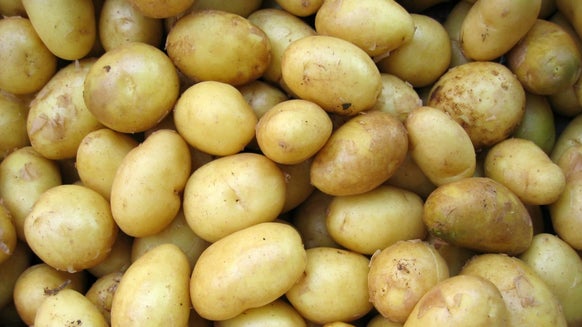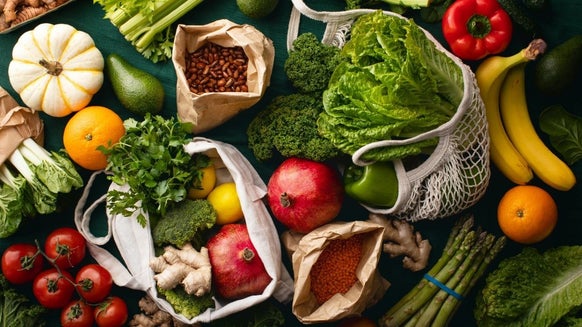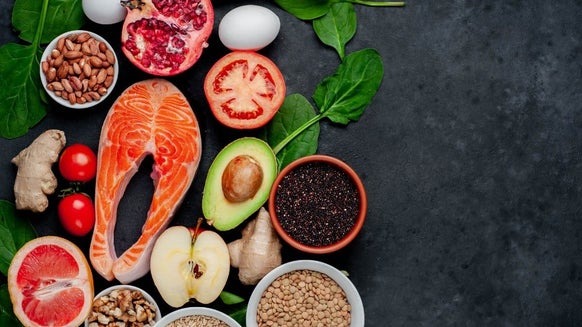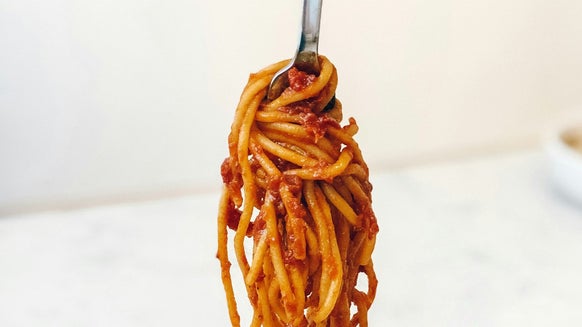
GLP-1 receptor agonists like Mounjaro, Ozempic, and Wegovy are transforming the never-ending search for a solution to sustainable weight loss by significantly reducing appetite, slowing gastric emptying, and improving blood sugar regulation. While these medications can lead to substantial fat loss, they also pose a risk of muscle loss if dietary and protein intake, is inadequate.
Since preserving lean muscle mass is essential for maintaining metabolic health, functional strength, and long-term weight management, prioritizing protein becomes a critical component of any diet while using these medications. Let’s explore the role of protein in supporting muscle retention, optimizing metabolism, and ensuring sustainable weight loss for individuals incorporating GLP-1 treatments into their lifestyle.
- The role of dietary protein intake in weight management
- Daily protein requirements
- Best protein sources
The role of dietary protein intake in weight management
Protein plays a crucial role in weight loss due to its impact on muscle maintenance, metabolism, and links to satiety.1
One of its primary benefits is supporting maintenance of lean muscle mass during calorie restriction. Research has consistently shown that adequate protein intake helps prevent muscle breakdown, which is especially important when losing weight, as maintaining muscle mass supports a higher resting metabolic rate.
Studies indicate that individuals consuming higher-protein diets retain more muscle compared to those following lower-protein diets, particularly when combined with resistance training.
Beyond muscle preservation, protein has a significant thermogenic effect, meaning the body burns more calories digesting and metabolising protein compared to fats or carbohydrates.
This process, known as the thermic effect of food (TEF), accounts for approximately 20–30% of protein’s energy content, whereas carbohydrates and fats have a much lower TEF (5–10% and 0–3%, respectively).2
As a result, higher protein intake slightly increases total daily energy expenditure, which can contribute to more effective weight loss over time.
Additionally, protein has been linked to enhanced satiety by influencing key appetite-regulating hormones, such as increasing levels of peptide YY and glucagon-like peptide-1 (GLP-1) while reducing ghrelin, AKA the hunger hormone.1
Numerous studies have demonstrated that individuals who consume a higher proportion of their calories from protein tend to experience reduced overall calorie intake due to prolonged feelings of fullness.
This effect makes it easier to sustain a calorie deficit without excessive hunger, a common challenge in weight loss efforts.
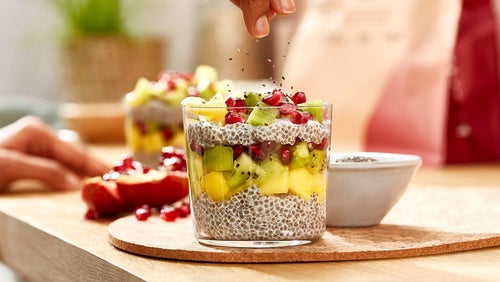
High-Protein Breakfast Foods
Protein is particularly important for individuals using GLP-1 treatments (such as Ozempic or Mounjaro), as these medications work by slowing gastric emptying, reducing appetite, and improving insulin sensitivity.3
While these effects can lead to significant weight loss, a major concern is the potential for lean muscle loss alongside fat loss, especially if protein intake is insufficient.
Given that GLP-1 treatments reduce hunger, there is a risk that users may unintentionally consume too little protein, exacerbating muscle breakdown.
By prioritising protein intake, individuals can mitigate this effect, ensuring that more of their weight loss comes from fat rather than lean mass.
This is particularly important for long-term metabolic health, as maintaining muscle mass supports glucose metabolism, strength, and overall functionality.
Moreover, protein intake may complement GLP-1 treatment by helping to sustain the satiety benefits of these medications while also addressing potential dietary gaps.
Since GLP-1 receptor agonists suppress appetite, individuals may eat less overall, but ensuring those smaller meals are protein-rich can maximise fullness and may also ensure nutritional adequacy.
Protein's role in promoting muscle protein synthesis also supports metabolic adaptation, helping to preserve resting energy expenditure, which can otherwise decline during periods of prolonged or rapid weight loss.1
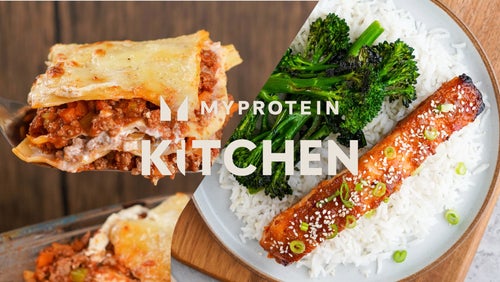
57 Meal Prep Recipes For Muscle Building & Fat Loss
Your next favourite prep is in here......
Daily protein requirements
Protein intake requirements will vary depending on an individual’s goal and should be tailored to the person’s body weight, activity level, age and the nature of their goal (whether it be fat loss, muscle maintenance, or muscle gain).
For fat loss while preserving muscle, some research suggests consuming 1.2 to 1.6 grams per kilogram of body weight per day.1
This range ensures that muscle mass is supported during a calorie deficit while promoting metabolic efficiency. Individuals on the higher end of this range typically include those who engage in resistance training or those at risk of muscle loss, such as older adults or those using GLP-1 medications.
For muscle gain or strength-focused goals, a higher intake of 1.8 to 2.7 g/kg (0.8 to 1.2 g/lb) is recommended. This higher intake supports muscle protein synthesis, especially when combined with progressive resistance training. Elite athletes or those undergoing intense training may consume up to 3.0 g/kg (1.4 g/lb) with no negative health effects.4
For general health and weight maintenance, a moderate intake of 1.2 to 1.6 g/kg (0.55 to 0.7 g/lb) is sufficient for those who engage in regular physical activity but do not have aggressive fat loss or muscle gain goals.5
To maximise protein utilisation, intake should be spread throughout the day, aiming for 20–40 grams per meal (every few hours), depending on body size and total daily needs.1,4
During a weight loss phase, protein intake should be adjusted to preserve muscle mass, maintain metabolic rate, and support satiety while in a calorie deficit.
Since weight loss inherently reduces overall calorie intake, the proportion of calories from protein should increase to ensure adequate muscle preservation. Research suggests a protein intake of 1.2 to 1.6 grams per kilogram of body weight would be suitable for most however, for those with extremely active schedule, relatively high amounts of muscle mass or who may be categorised as “elite athletes” intakes as high as 2.3 to 3.1 grams per kilogram of bodyweight per day may be required to maintain muscle mass. This intake may also be beneficial to those undergoing more extreme dietary restriction strategies (such as the use of GLP-1 treatments).
Best protein sources
Before discussing protein sources, we must first understand protein quality.
The quality of a protein source is determined by its amino acid composition, digestibility, and bioavailability.
High-quality proteins contain all nine essential amino acids in adequate amounts and are easily absorbed by the body, making them more effective for muscle maintenance, metabolic function, and overall health.
Animal-based proteins such as eggs, poultry, fish, dairy, and lean meats are considered high-quality because they provide a complete amino acid profile and are highly bioavailable.
Among these, whey protein is particularly notable due to its high leucine content, which is critical for stimulating muscle protein synthesis.

14 Foods High In Protein: Sources And Vegan Alternatives
The underdogs of the protein world have entered the chat......
In contrast, lower-quality proteins tend to be incomplete, meaning they lack one or more essential amino acids, or they have lower digestibility.
Most plant-based proteins, such as grains, legumes, and nuts, fall into this category when consumed in isolation. For example, rice and wheat proteins are lower in lysine, while legumes tend to be lower in methionine.
However, this does not mean plant-based eaters cannot achieve sufficient protein quality; an easy work around is to simply combine complementary protein sources e.g. combining beans and rice in a meal (such as a plant-based chilli recipe).
Vegetarians can obtain high-quality protein from dairy (Greek yogurt, cottage cheese, milk) and eggs, which provide all essential amino acids.
As mentioned, vegans can achieve a complete amino acid profile by combining different plant-based protein sources throughout the day. For example, pairing legumes with grains, such as rice and beans, lentils and whole wheat bread, or hummus with pita—ensures that missing amino acids are compensated for.
Soy-based products like tofu, tempeh, and edamame are also excellent vegan options, as soy is one of the few plant proteins that is naturally complete. Additionally, pea and rice protein blends in supplement form provide a well-balanced amino acid profile like whey.
Despite common misconceptions, some foods that are perceived as high in protein provide relatively low amounts per serving, making it harder to reach daily protein goals without excess calorie intake.
Nuts, nut butters, and seeds, while nutrient-dense, are often mistaken as high-protein sources, but their protein-to-calorie ratio is relatively low due to their high fat content.
Similarly, oats, quinoa, and whole grains contain some protein but are primarily carbohydrate sources, meaning large portions are required to contribute meaningfully to daily protein needs.
Even plant-based milk alternatives, such as almond or oat milk, provide minimal protein unless fortified.
Relying too heavily on these foods without incorporating more concentrated protein sources can make it difficult to meet protein requirements while staying within energy targets, potentially hindering fat loss or muscle preservation goals.

Top 18 Vegetarian & Vegan Protein Sources
It's never been easier to meet your macros....
Take home message
Ensuring adequate daily protein intake while using Mounjaro, Ozempic, or Wegovy is essential for preserving muscle mass, maintaining metabolic health, and supporting long-term weight management.
While these GLP-1 medications effectively reduce appetite and promote fat loss, they also increase the risk of lean muscle loss if protein needs are not met.
By incorporating high-quality protein sources, distributing intake evenly throughout the day, and complementing dietary strategies with resistance training, individuals can enhance their weight loss outcomes while safeguarding their muscle and overall well-being.
A well-structured, protein-rich diet not only maximises the benefits of GLP-1 treatments but also sets the foundation for sustainable health beyond medication use.

- Leidy, H. J., Clifton, P. M., Astrup, A., Wycherley, T. P., Westerterp-Plantenga, M. S., Luscombe-Marsh, N. D., Woods, S. C., & Mattes, R. D. (2015). The role of protein in weight loss and maintenance. The American journal of clinical nutrition, 101(6), 1320S–1329S. https://doi.org/10.3945/ajcn.114.084038
- Westerterp K. R. (2004). Diet induced thermogenesis. Nutrition & metabolism, 1(1), 5. https://doi.org/10.1186/1743-7075-1-5
- Zheng, Z., Zong, Y., Ma, Y., Tian, Y., Pang, Y., Zhang, C., & Gao, J. (2024). Glucagon-like peptide-1 receptor: mechanisms and advances in therapy. Signal transduction and targeted therapy, 9(1), 234. https://doi.org/10.1038/s41392-024-01931-z
- Jäger, R., Kerksick, C. M., Campbell, B. I., Cribb, P. J., Wells, S. D., Skwiat, T. M., Purpura, M., Ziegenfuss, T. N., Ferrando, A. A., Arent, S. M., Smith-Ryan, A. E., Stout, J. R., Arciero, P. J., Ormsbee, M. J., Taylor, L. W., Wilborn, C. D., Kalman, D. S., Kreider, R. B., Willoughby, D. S., Hoffman, J. R., … Antonio, J. (2017). International Society of Sports Nutrition Position Stand: protein and exercise. Journal of the International Society of Sports Nutrition, 14, 20. https://doi.org/10.1186/s12970-017-0177-8
- Phillips, S. M., Chevalier, S., & Leidy, H. J. (2016). Protein “requirements” beyond the RDA: implications for optimizing health. Applied physiology, nutrition, and metabolism = Physiologie appliquee, nutrition et metabolisme, 41(5), 565–572. https://doi.org/10.1139/apnm-2015-0550
